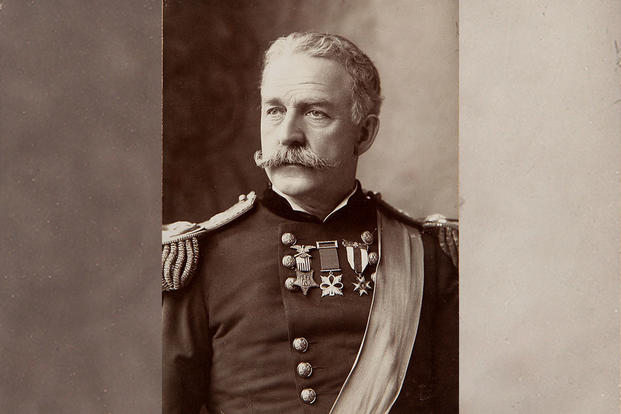When the U.S. Army invaded Puerto Rico on July 25, 1898, it took 3,415 U.S. soldiers just 13 days to occupy 23 out of 70 Puerto Rican towns. By Aug. 13, the U.S. held more than half of "Porto Rico," and the American media had begun to refer to the Spanish-American War invasion as "Gen. Miles' Puerto Rican picnic."
Gen. Nelson Appleton Miles, "a brave peacock" in Teddy Roosevelt's words, entered the Army a mere private and emerged decades later as one of the service's most storied and controversial figures. Wounded four times during some of the Civil War's most crucial battles -- including Fredericksburg, Chancellorsville and the Appomattox campaign -- he won promotion to major general of volunteers.
Miles also loomed large in the Army's campaigns against the tribes of the Great Plains. He scoured the northern plains after Gen. George Custer's defeat at Little Big Horn, forcing the Lakota onto reservations. He argued for years with Gen. Oliver Howard about which of them had actually captured Chief Joseph of the Nez Perce, although it is clear that Miles had an instrumental role in the incident. Clashing with Gen. George Crook, Miles refused to use Apache scouts in trying to capture Geronimo, a decision that cost him men, money and miles.
Self-schooled in military strategy and tactics, Miles never got over his belief that West Point graduates were given unfair advantage in promotions. Ironically, he became one of the Army's most ardent practitioners of influence peddling. In 1868, he made a political and career union by marrying Mary Hoyt Sherman, niece of both Gen. William Tecumseh Sherman and Ohio Sen. John Sherman. When Gen. Sherman became Army chief of staff, Miles lost no time in looking to him for favors. (Sherman refused.)
After commanding the "Puerto Rican Picnic" and causing trouble over U.S. policy in the Philippines, Miles stepped down in 1903 at the mandatory retirement age of 64. He was the last commanding general in the Army's history and the oldest surviving Civil War general.
While attending a circus performance with his grandchildren in 1925, Miles stood for the national anthem and dropped dead of a heart attack. Perhaps the finest moment of this colorful man's history was his burial at Arlington National Cemetery, attended by President Calvin Coolidge and accorded all the military pomp that had made his career soldier's heart glad.
Want to Know More About the Military?
Be sure to get the latest news about the U.S. military, as well as critical info about how to join and all the benefits of service. Subscribe to Military.com and receive customized updates delivered straight to your inbox.














